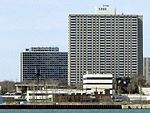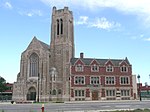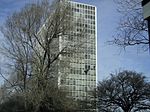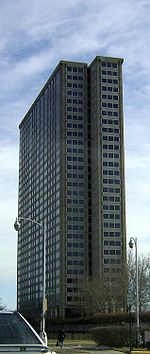Nellie Leland School
1918 establishments in MichiganDetroit Public Schools Community DistrictNational Register of Historic Places in DetroitSchool buildings completed in 1918School buildings on the National Register of Historic Places in Michigan ... and 1 more
Schools in Detroit

The Nellie Leland School is a school building, originally built to serve handicapped children, located at 1395 Antietam Avenue in Detroit, Michigan (the former location of the Detroit Barracks, where Lieutenant Ulysses S. Grant served from 1849 to 1851). It was listed on the National Register of Historic Places in 2002. The building has been renovated into loft space.
Excerpt from the Wikipedia article Nellie Leland School (License: CC BY-SA 3.0, Authors, Images).Nellie Leland School
Antietam Avenue, Detroit
Geographical coordinates (GPS) Address Nearby Places Show on map
Geographical coordinates (GPS)
| Latitude | Longitude |
|---|---|
| N 42.341 ° | E -83.0372 ° |
Address
Leland Lofts
Antietam Avenue 1395
48207 Detroit
Michigan, United States
Open on Google Maps










